News from Home is a film shot in New York. The images are of New York. The soundtrack is partly composed of letters my mother sent me from Brussels. They’re love letters. My mother was asking when I’d come back, giving me news of the family, telling me she’d been ill. Some of it, towards the end, outlines the daily life of Belgium and the critical status for Europeans of the ‘American myth’. When you see the images, you realise that New York has nothing to do with European ideas about it. The myth doesn’t connect at all with the reality of the city. One feels a huge disjunction between European life and the hope one finds in these letters from home, and New York life. In this sense my film is a real disaster movie – not like The Towering Inferno.
News from Home is a lyrical film, constructed according to feelings. It’s nevertheless comparable to Jeanne Dielman in the sense that when I use images of the underground, it’s more than the underground, like when I show Jeanne Dielman grinding the coffee beans, it means more than just that. I always try to find the essence of what I’m doing…
Chantal Akerman, London Film Festival programme notes
Regardless of how often I’ve revisited Chantal Akerman’s News from Home, I continually find new details to admire. The experience is much like strolling around a favourite neighbourhood and being pleasantly surprised by an alleyway or street corner that has previously eluded my attention. This time around, a slight movement in the documentary’s many long takes catches my eyes. Placed squarely in the middle of a full shot observing a late-night eatery is a square window, through which one can glimpse the back of a customer who is enjoying his nocturnal meal at the bar counter. Barely visible near the windowsill – I notice for the first time – is the hand of an unknown person, dexterously pouring sugar into their coffee.
The brief movement feels like a dance, a part of New York’s urban choreography beautifully captured in News from Home where every little quotidian moment is observed with astonishing care. Made in 1976, the film travels from one extended metropolitan tableau to another, over which is laid Akerman’s own voice reading letters sent from Belgium. They were written by her mother, Nelly, between 1971 and 1973 when the director had just moved there. As the screen flickers with images of bustling Midtown streets, graffitied subway compartments and lonely car parks wrapped in the blueish hue of fluorescent street lamps, the content of the letters adds an intimacy to the city’s anonymity.
They are a topography of day-to-day familial life. Amid Nelly’s motherly worries, which range from Akerman’s financial situation to her summer closet, are seemingly simple yet startling everyday events, which feel much more significant when one is far away from home. At times, Akerman’s voice, though not recorded on location, is drowned out by the cacophony of traffic, an articulation of the way city living can eclipse and invade our inner lives. Still, the voiceover remains a patient constant. It’s a dependable anchor, emotionally and cinematically, across the shifting urban landscapes.
News from Home is one of the best films that illustrate the principles of psychogeographical thoughts. It represents the kind of ‘spatial stories’ championed by French theorist Michel de Certeau in The Practice of Everyday Life. According to de Certeau, two manners of speaking about spaces exist. The first kind, executed by maps and tours, aims to produce legible figures and results. In contrast, the second kind, which he calls ‘spatial stories’, extend beyond numerical constraints. They lend a humanity to places. For example, a map can inform a reader of the size of an apartment but not of the tactile interactions between the space and its inhabitants. In the same vein, News from Home does not approach the New York landscape like a mechanical geographer. Favouring the long take, the film does away with the tradition of employing establishing shots to create a sense of spatial unity. As a result, viewers might find it difficult to visualise the geographical relationships between the different locations. Nevertheless, this spatial confusion is precisely what humanises New York, as the film drops the efficiency of a geographer and picks up the more playful approach of a psychogeographer.
Furthermore, it also deconstructs the overly glamorised image of New York in cinema. In his 1967 book The Society of the Spectacle, the situationist theorist Guy Debord posits the city as a spectacle consisting of consumerist locations such as shopping centres or stores, as well as tourist attractions, which further lull visitors into a faculty-numbing sense of leisure. According to Debord, the city spectacle is a ‘commodity heaven’, projecting a false sense of cross-class unity. This ‘heaven’, however, is nowhere to be found in Akerman’s film, where a cloud of unproductivity lingers in images of trash-filled streets or people simply sitting on the subway.
News from Home also refuses to check off the city’s obvious landmarks. Here, the New York panorama seen from the Hudson River makes its appearance extremely late, a mere ten minutes before the film ends. This introduction of the view resists the conventional cinematic impulse to exalt the city. Instead of a wide shot, the sequence begins with a nondescript building before pulling back, in a painstakingly slow fashion, to reveal the famous skyline. The result is wonderfully disorienting, as images of urban ennui and poverty effectively subvert this final illusion of prosperous skyscrapers.
Theoretical significance aside, this final shot also holds an autobiographical poignancy, a nostalgic look at the city that looms large over Akerman’s personal and artistic growth. The daughter of Holocaust survivors, she felt perpetually displaced, saying in an interview: ‘I don’t have a relationship with any place. […] I don’t have the idea of land. Just the opposite. I have the feeling that I am not attached to the land under my feet.’ Yet she had also spoken of New York as a place where she felt more at home than in Europe. Indeed, it is the city where the seeds of her formalistic obsessions, such as the long take, took root. Her short film La Chambre (1972) and her first full-length documentary Hotel Monterey (1973), both shot in New York, feature nearly uninterrupted shots of domestic and transient interiors, a style that culminated in the seminal Jeanne Dielman, 23 quai du commerce, 1080 Brussels (1975). As News from Home was made on her return to the city, a wistfulness hums along the flow of cars and the ripples of the Hudson River, compelling us to ponder our own changing journey through life.
Phuong Le, Sight and Sound, December 2021
NEWS FROM HOME
Director: Chantal Akerman
Production Companies: Unité 3, L’Institut National de l’Audiovisuel, Paradise Films
Producer (Unité 3): Alain Dahan
Assistant Directors: Paule Zadjerman, Epp Kotkes
Written by: Chantal Akerman
Directors of Photography: Babette Mangolte, Jim Asbell
Editor: Francine Sandberg
Sound Recording: Dominique Dalmasso, Larry Haas
Sound Editor: Dominique Dalmasso
France-Belgium 1976
89 mins
Digital (restoration)
In partnership with



All restorations by Royal Film Archive of Belgium (CINEMATEK) and Fondation Chantal Akerman unless otherwise stated.
Season generously supported by Philippe & Stephanie Camu.
Supported by the General Representation of Wallonia-Brussels in the United Kingdom.
With thanks to Céline Brouwez, Fondation Chantal Akerman; Joanna Hogg and Adam Roberts, A Nos Amours.
Chantal Akerman Collection Vol.1: 1967-1978 (Limited Edition 5-Disc Blu-ray Box Set)
Spanning the period 1967 to 1978, and representing the first significant release of Chantal Akerman’s work in the UK, this 5-Blu-ray set includes her most famous film, Jeanne Dielman, 23, quai du Commerce, 1080 Bruxelles. Available from BFI Shop from 24 February.
Sight and Sound presents the auteurs series: Chantal Akerman
Revisiting material from the Sight and Sound and Monthly Film Bulletin archive and also publishing exclusive texts and images from the Fondation Chantal Akerman archive, Sight and Sound presents the auteurs series: Chantal Akerman. Available now from BFI Shop.
SIGHT AND SOUND
Never miss an issue with Sight and Sound, the BFI’s internationally renowned film magazine. Subscribe from just £25*
*Price based on a 6-month print subscription (UK only). More info: sightandsoundsubs.bfi.org.uk

BFI SOUTHBANK
Welcome to the home of great film and TV, with three cinemas and a studio, a world-class library, regular exhibitions and a pioneering Mediatheque with 1000s of free titles for you to explore. Browse special-edition merchandise in the BFI Shop.We're also pleased to offer you a unique new space, the BFI Riverfront – with unrivalled riverside views of Waterloo Bridge and beyond, a delicious seasonal menu, plus a stylish balcony bar for cocktails or special events. Come and enjoy a pre-cinema dinner or a drink on the balcony as the sun goes down.
BECOME A BFI MEMBER
Enjoy a great package of film benefits including priority booking at BFI Southbank and BFI Festivals. Join today at bfi.org.uk/join
BFI PLAYER
We are always open online on BFI Player where you can watch the best new, cult & classic cinema on demand. Showcasing hand-picked landmark British and independent titles, films are available to watch in three distinct ways: Subscription, Rentals & Free to view.
See something different today on player.bfi.org.uk
Join the BFI mailing list for regular programme updates. Not yet registered? Create a new account at www.bfi.org.uk/signup
Programme notes and credits compiled by Sight and Sound and the BFI Documentation Unit
Notes may be edited or abridged
Questions/comments? Contact the Programme Notes team by email

